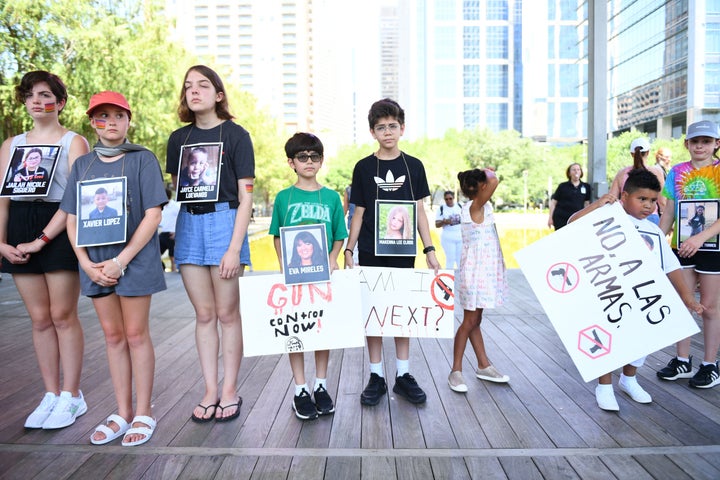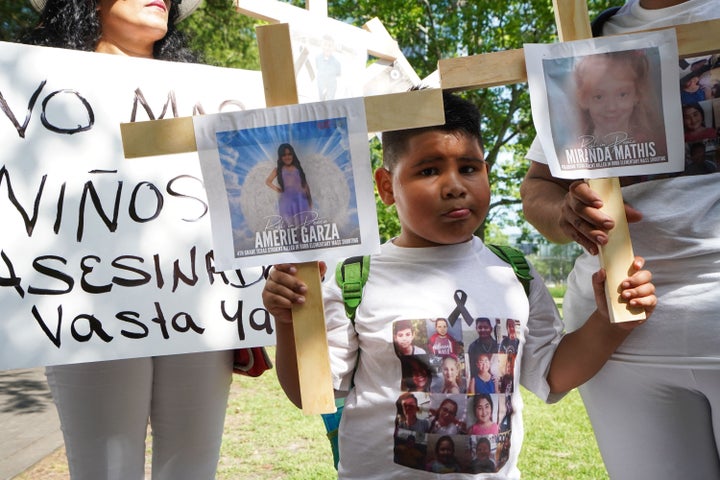Lesbian Jamie McLeod-Skinner Wins Congressional Primary in Oregon

Oregon could have its first member of Congress from the LGBTQ+ community with lesbian Jamie McLeod-Skinner’s victory over incumbent Kurt Schrader in the state’s Fifth Congressional District.
The Associated Press and the state’s largest newspaper, The Oregonian, both called the race for McLeod-Skinner Friday. Problems with counting ballots had delayed the call in the May 17 primary.
McLeod-Skinner will face Republican Lori Chavez-DeRemer in November’s general election. The Fifth District leans Democratic and extends from Oregon’s central coast through the southern suburbs of Portland and then farther inland. McLeod-Skinner had run unsuccessfully for the U.S. House from the Second District in 2018; Oregon’s congressional districts have since been redrawn.
She challenged Schrader from the left, portraying him as too moderate and too close to big-money interests such as pharmaceutical companies. He was endorsed by President Joe Biden, even though he had opposed some aspects of Biden’s legislative program. McLeod-Skinner was endorsed by some other high-profile Democrats, such as U.S. Sen. Elizabeth Warren of Massachusetts.
Schrader, a farmer and veterinarian, is in his seventh term in the House. McLeod-Skinner is a lawyer, small-business owner, and emergency response coordinator. She has worked in refugee resettlement and helped repair schools and hospitals in Bosnia and Kosovo, has served on several local boards, and was interim city manager of the Oregon town of Talent.
“This is a David and Goliath moment,” Maurice Mitchell, national director of the Working Families Party, of which McLeod-Skinner is a member, told The Washington Post. “This win proves that voters are hungry for leaders who will fight for working families, not billionaires and Big Pharma.”
McLeod tweeted that her victory is for all Oregonians.
The LGBTQ Victory Fund had endorsed McLeod-Skinner and hailed her win. “For years, Jamie has been committed to addressing the climate crisis and its impacts, helping working families, safeguarding abortion and access to reproductive health care and defending our democracy,” Victory Fund President and CEO Annise Parker said in a press release. “Her success is a direct result of her steadfast commitment to community organizing and grassroots advocacy. Oregonians are clearly enthusiastic about her vision for our future. For far too long, Oregon’s LGBTQ community has not had a voice in Congress. By shattering this lavender ceiling, Jamie is one step closer to changing that. With anti-LGBTQ attacks spreading like wildfire and lawmakers in Congress bent on outlawing abortion and reproductive health care, her election could not come at a more critical moment in our nation’s history.”
LPAC, which is dedicated to electing women from the LGBTQ+ community to office, also had endorsed McLeod-Skinner and issued a statement upon her victory. “LPAC supports good candidates who run good campaigns. Jamie ran a competitive race challenging a longtime member of Congress,” said LPAC Executive Director Lisa Turner. “After spending time talking to Jamie McLeod-Skinner and her team we saw that she was the right candidate for Central Oregon, and that institutional support and investments could help her win this race. We are proud to be the first LGBTQ organization to endorse and contribute to her campaign. We look forward to continuing to work with Jamie as she takes the fight to the general election in November.”
She is not the only lesbian poised to make history in Oregon. Tina Kotek won the Democratic primary for governor, and if she wins in November, she would be the state’s first lesbian chief executive.
Biden-backed ‘Blue Dog’ loses primary to attorney Jamie McLeod-Skinner

By Kate Ackley
Rep. Kurt Schrader, a seven-term Democrat from Oregon’s 5th District, lost his renomination bid to attorney and emergency response coordinator Jamie McLeod-Skinner, who had the backing of local party officials and progressive groups.
McLeod-Skinner had 57 percent of the vote to Schrader's 43 percent when The Associated Press called the race at 11:55 a.m. Eastern time Friday. The primary, held May 17, took more than a week to call because of vote-counting delays attributed to ballot-printing problems in Schrader's home county of Clackamas.
President Joe Biden and House Democrats’ campaign arm tried to come to Schrader’s defense, and the incumbent held a strong campaign cash advantage. But it wasn’t enough to overcome the dual headwinds of redistricting and a Democratic primary electorate that has become more liberal.
Republicans were already targeting the district, which Biden won in 2020 by 9 points, for November. GOP operatives now view it as a better pickup opportunity because no one will have the benefit of incumbency and because McLeod-Skinner leans more liberal than Schrader. Inside Elections with Nathan L. Gonzales moved the rating for the race this week from Likey to Lean Democratic.
In the general election, she will face Republican Lori Chavez-DeRemer, a former Happy Valley mayor who held $135,000 cash on hand as of April 27.
Schrader had $1.3 million in the bank to McLeod-Skinner’s $110,000 as of April 27. He also benefited from more outside spending, with $1.3 million spent supporting him and another $845,000 spent against McLeod-Skinner. Conversely, just $235,000 in outside spending was spent supporting her and only $35,000 spent against Schrader.
McLeod-Skinner portrayed Schrader as distant from his constituents, and progressive activists said that, as a fiscally conservative Democrat, he was out of step with the party and had sided too often with business interests. During his career in the House, Schrader voted with his party, on votes that split Republicans and Democrats, 85.6 percent of the time, according to CQ Vote Watch.
Schrader is the fourth incumbent to lose a primary this year. The others are Democrat Carolyn Bourdeaux of Georgia and Republicans Madison Cawthorn of North Carolina and David B. McKinley of West Virginia.
Endangered species?
Schrader is a member of the Blue Dog Coalition, a group of fiscally conservative Democrats who have been dwindling in number.
Schrader, who was first sworn into the House on the cusp of the Obama presidency, once told Portland-based newspaper The Oregonian that the Blue Dog group is “a balance to the Elizabeth Warrens of the world,” a reference to the progressive Massachusetts senator. Warren endorsed McLeod-Skinner in the primary.
“She will fight for prescription drug coverage for seniors, tackle the climate crisis, and stand shoulder to shoulder with working families,” Warren said in her endorsement of the challenger.
Local liberal activists were “furious” with Schrader for voting against some key components of the Democrats’ agenda, including a vote he took in a House committee to thwart a bill that would have allowed Medicare to negotiate prescription drug prices, according to Leah Greenberg, a co-founder of the progressive group Indivisible. They also blame him, in part, for being part of a small group of House members who successfully pushed to de-link a bipartisan infrastructure measure from the broader tax and climate policy package known as the “Build Back Better” bill, Greenberg added.
“We don’t always agree, but when it has mattered most, Kurt has been there for me,” Biden said in a statement about the endorsement.
Redistricting also muted the incumbent’s advantages, with about half the voters from the district he won in 2020 now part of the new 6th District that the state received through reapportionment.
Congressional career
On Capitol Hill, Schrader served on the House Energy and Commerce Committee. A licensed veterinarian and co-chairman of the Veterinary Medicine Caucus, he pushed through several bills related to animals, including one to expand regulations designed to combat horse soring — using chemicals, pressure or devices to cause pain to horses’ front feet so they pick them up higher and faster than they naturally would.
“Horse soring still runs rampant even though laws have been on the books for decades banning this cruel practice,” he said after the House voted to pass the bill in July 2019.
Schrader is also part of the bipartisan Problem Solvers Caucus.
He has, at times, challenged his party’s leadership in the House. He was one of 63 Democrats who voted for Rep. Tim Ryan, an Ohio Democrat who is running for Senate this year, in a November 2016 challenge to then-Minority Leader Nancy Pelosi’s leadership. He again opposed Pelosi’s leadership bid in the 116th Congress as Democrats took control of the chamber in January 2019. Schrader was one of 15 Democrats who didn’t vote for her election as House speaker.
Schrader’s political career began in the Oregon House of Representatives in 1996. He was first elected to Congress in 2008 after a 30-plus year career as a veterinarian and farmer, replacing six-term Democratic Rep. Darlene Hooley, who retired.










 © Patrick T. Fallon, AFP
© Patrick T. Fallon, AFP

